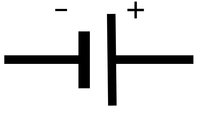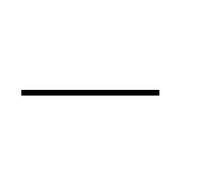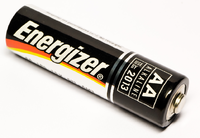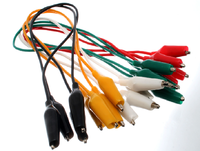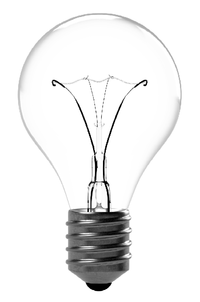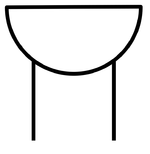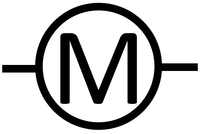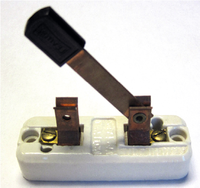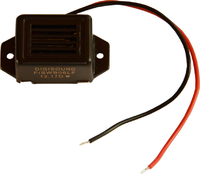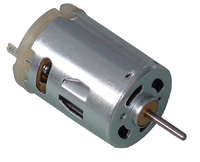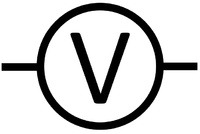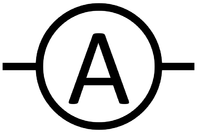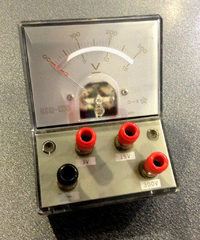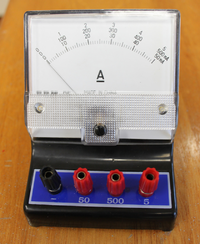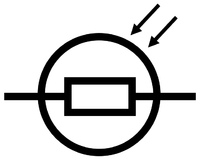Difference between revisions of "Electrical Component"
(→Key Stage 3) |
|||
| Line 59: | Line 59: | ||
: The '''components''' you should know are: | : The '''components''' you should know are: | ||
*[[Electrical Cell]] | *[[Electrical Cell]] | ||
| + | *[[Battery]] | ||
*[[Wire]]s | *[[Wire]]s | ||
*[[Electrical Bulb]] | *[[Electrical Bulb]] | ||
| Line 122: | Line 123: | ||
| style="height:20px; width:200px; text-align:center;" |A [[Voltmeter]] is used to [[measure]] the [[Potential Difference]] between two points on a [[circuit]]. | | style="height:20px; width:200px; text-align:center;" |A [[Voltmeter]] is used to [[measure]] the [[Potential Difference]] between two points on a [[circuit]]. | ||
| style="height:20px; width:200px; text-align:center;" |An [[Ammeter]] is used to [[measure]] the [[Electrical Current|Current]] passing through part of a [[circuit]]. | | style="height:20px; width:200px; text-align:center;" |An [[Ammeter]] is used to [[measure]] the [[Electrical Current|Current]] passing through part of a [[circuit]]. | ||
| + | |} | ||
| + | |||
| + | ==Key Stage 4== | ||
| + | ===Meaning=== | ||
| + | A '''component''' is a part of an [[Circuit|electrical circuit]]. | ||
| + | |||
| + | ===About Components=== | ||
| + | : '''Components''' in a [[circuit]] are used to do different jobs. | ||
| + | : The '''components''' you should know are: | ||
| + | *[[Electrical Cell]] | ||
| + | *[[Wire]]s | ||
| + | *[[Electrical Bulb]] | ||
| + | *[[Switch]] | ||
| + | *[[Buzzer]] | ||
| + | *[[Motor]] | ||
| + | *[[Resistor]] | ||
| + | *[[Voltmeter]] | ||
| + | *[[Ammeter]] | ||
| + | |||
| + | ===Examples=== | ||
| + | {| class="wikitable" | ||
| + | |- | ||
| + | |'''Electrical Cell''' | ||
| + | |'''Wires''' | ||
| + | |'''Filament Bulb''' | ||
| + | |- | ||
| + | |[[File:CellSymbol.png|center|200px]] | ||
| + | |[[File:WireSymbol.png|center|200px]] | ||
| + | |[[File:BulbSymbol.png|center|200px]] | ||
| + | |- | ||
| + | | style="height:20px; width:200px; text-align:center;" |A cell makes the electricity flow in a circuit. | ||
| + | | style="height:20px; width:200px; text-align:center;" |Wires are the path for electricity to flow. | ||
| + | | style="height:20px; width:200px; text-align:center;" |A filament bulb lights up when electricity flows through it. | ||
| + | |} | ||
| + | {| class="wikitable" | ||
| + | |- | ||
| + | |'''Switch''' | ||
| + | |'''Buzzer''' | ||
| + | |'''Motor''' | ||
| + | |- | ||
| + | |[[File:SwitchOpenSymbol.png|center|200px]] | ||
| + | |[[File:BuzzerSymbol.png|center|150px]] | ||
| + | |[[File:MotorSymbol.png|center|200px]] | ||
| + | |- | ||
| + | | style="height:20px; width:200px; text-align:center;" |A switch can complete or break a circuit to turn it on and off. | ||
| + | | style="height:20px; width:200px; text-align:center;" |A buzzer makes a sound when electricity flows through it. | ||
| + | | style="height:20px; width:200px; text-align:center;" |A motor spins when electricity flows through it. | ||
| + | |} | ||
| + | {| class="wikitable" | ||
| + | |- | ||
| + | |'''Resistor''' | ||
| + | |'''Voltmeter''' | ||
| + | |'''Ammeter''' | ||
| + | |- | ||
| + | |[[File:ResistorSymbol.png|center|200px]] | ||
| + | |[[File:VoltmeterSymbol.png|center|200px]] | ||
| + | |[[File:AmmeterSymbol.png|center|200px]] | ||
| + | |- | ||
| + | | style="height:20px; width:200px; text-align:center;" |A [[resistor]] reduces the flow of [[Electrical Current|current]] through a [[circuit]]. | ||
| + | | style="height:20px; width:200px; text-align:center;" |A [[Voltmeter]] is used to [[measure]] the [[Potential Difference]] between two points on a [[circuit]]. | ||
| + | | style="height:20px; width:200px; text-align:center;" |An [[Ammeter]] is used to [[measure]] the [[Electrical Current|Current]] passing through part of a [[circuit]]. | ||
| + | |- | ||
| + | |'''Variable Resistor''' | ||
| + | |'''Light Dependent Resistor''' | ||
| + | |'''Thermistor''' | ||
| + | |- | ||
| + | |[[File:VariableResistorSymbol.png|center|200px]] | ||
| + | |[[File:LightDependentResistorSymbol.png|center|200px]] | ||
| + | |[[File:ThermistorSymbol.png|center|200px]] | ||
| + | |- | ||
| + | | style="height:20px; width:200px; text-align:center;" |A [[Variable Resistor|variable resistor]] can change [[Electrical Resistance|resistance]] controlling the [[Electrical Current|current]] flowing through a [[circuit]]. | ||
| + | | style="height:20px; width:200px; text-align:center;" |A [[Light Dependent Resistor|light dependent resistor (LDR)]] changes [[Electrical Resistance|resistance]] depending on [[light]] intensity, the lower the intensity the greater the [[Electrical Resistance|resistance]]. | ||
| + | | style="height:20px; width:200px; text-align:center;" |A [[thermistor]] changes [[Electrical Resistance|resistance]] depending on the [[temperature]]. | ||
|} | |} | ||
Revision as of 21:08, 25 February 2019
Contents
Key Stage 2
Meaning
A component is a part of an electrical circuit.
About Components
- Components in a circuit are used to do different jobs.
- The components you should know are:
Examples
| Electrical Cell | Wires | Filament Bulb |
| A cell makes the electricity flow in a circuit. | Wires are the path for electricity to flow. | A filament bulb lights up when electricity flows through it. |
| Switch | Buzzer | Motor |
| A switch can complete or break a circuit to turn it on and off. | A buzzer makes a sound when electricity flows through it. | A motor spins when electricity flows through it. |
Key Stage 3
Meaning
A component is a part of an electrical circuit.
About Components
- Components in a circuit are used to do different jobs.
- The components you should know are:
Examples
| Electrical Cell | Wires | Filament Bulb |
| A cell makes the electricity flow in a circuit. | Wires are the path for electricity to flow. | A filament bulb lights up when electricity flows through it. |
| Switch | Buzzer | Motor |
| A switch can complete or break a circuit to turn it on and off. | A buzzer makes a sound when electricity flows through it. | A motor spins when electricity flows through it. |
| Resistor | Voltmeter | Ammeter |
| A resistor reduces the flow of current through a circuit. | A Voltmeter is used to measure the Potential Difference between two points on a circuit. | An Ammeter is used to measure the Current passing through part of a circuit. |
Key Stage 4
Meaning
A component is a part of an electrical circuit.
About Components
- Components in a circuit are used to do different jobs.
- The components you should know are:
Examples
| Electrical Cell | Wires | Filament Bulb |
| A cell makes the electricity flow in a circuit. | Wires are the path for electricity to flow. | A filament bulb lights up when electricity flows through it. |
| Switch | Buzzer | Motor |
| A switch can complete or break a circuit to turn it on and off. | A buzzer makes a sound when electricity flows through it. | A motor spins when electricity flows through it. |
| Resistor | Voltmeter | Ammeter |
| A resistor reduces the flow of current through a circuit. | A Voltmeter is used to measure the Potential Difference between two points on a circuit. | An Ammeter is used to measure the Current passing through part of a circuit. |
| Variable Resistor | Light Dependent Resistor | Thermistor |
| A variable resistor can change resistance controlling the current flowing through a circuit. | A light dependent resistor (LDR) changes resistance depending on light intensity, the lower the intensity the greater the resistance. | A thermistor changes resistance depending on the temperature. |
